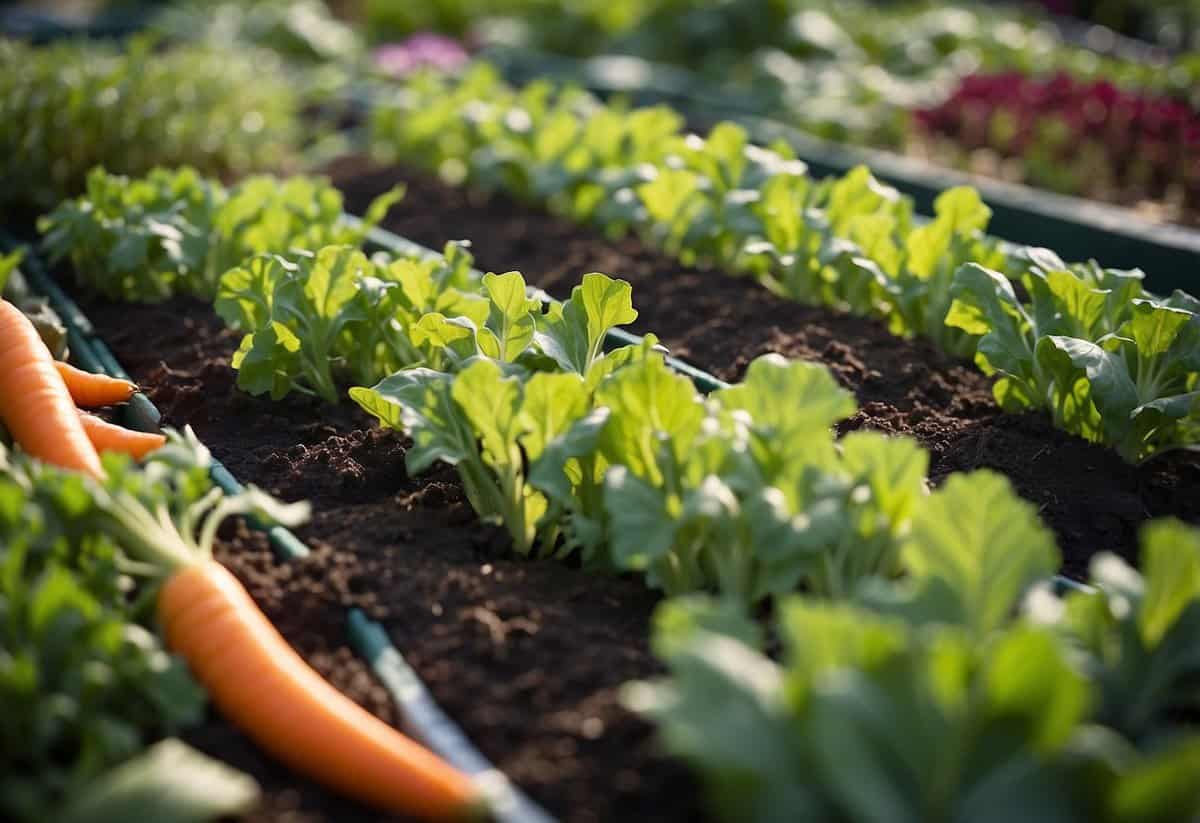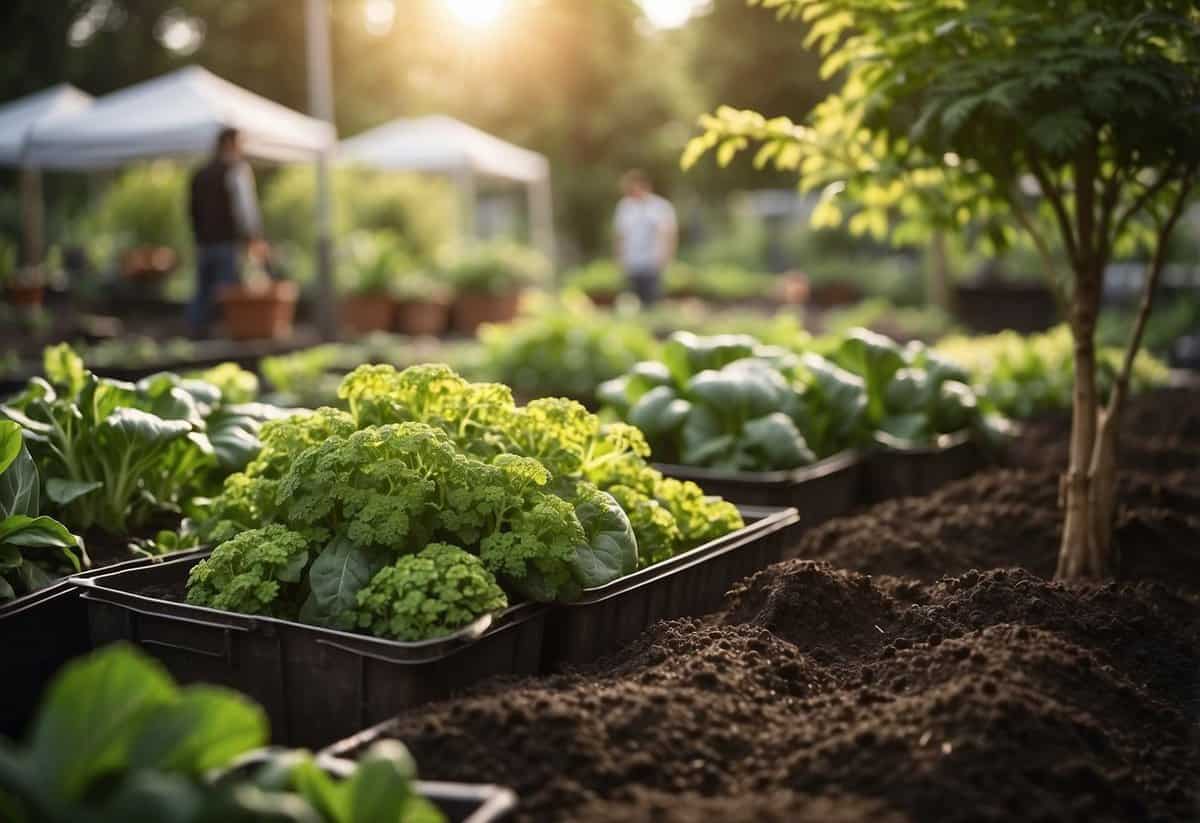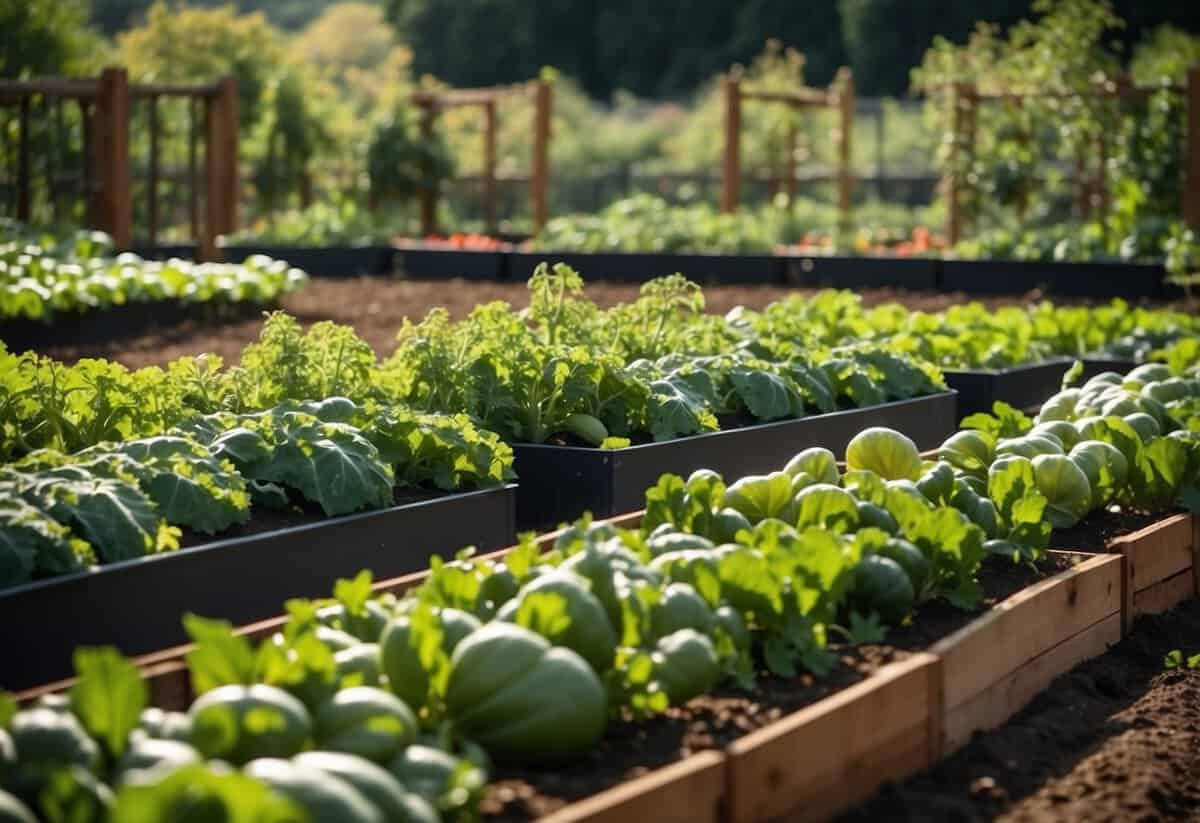Small Garden Ideas Vegetables: Tips for Growing Fresh Produce in Tiny Spaces
Creating a small vegetable garden is a great way to enjoy fresh produce right from your backyard. You don’t need a lot of space to grow healthy and tasty vegetables for your family. Even a tiny area can be transformed into a productive garden with a few smart ideas.

How can you make the most of your small garden space to grow vegetables? The key is to be creative and use techniques that maximize your space. From raised beds to containers, there are many ways to turn even the smallest spot into a thriving vegetable garden. This article will explore practical tips and ideas to help you get started.
Raised Bed Gardening

Raised bed gardening is a great way to grow vegetables in a small garden.
With raised beds, you have better control over the soil. You can add compost to improve fertility and structure.
Tomatoes, basil, lettuce, and cucumbers are excellent choices for raised beds. These vegetables grow quickly and yield well even in imperfect conditions.
2) Vertical Planters

Vertical planters are perfect for small gardens. They allow you to grow vegetables in a limited space by going upwards instead of outwards.
You can easily create a PVC pipe vertical herb garden or use wooden crates to build a rainbow vertical garden.
Try a garden with a drip watering system to keep your plants hydrated. Vertical planters can transform your garden space efficiently and beautifully.
3) Companion Planting

Companion planting is a smart way to make the most of your small garden.
By growing certain plants together, you can help them thrive. For example, beans and corn grow well side by side. Beans add nitrogen to the soil, which helps corn grow better.
Some plants can even deter pests. Marigolds, when planted with tomatoes, can keep harmful insects away. Tomatoes and basil are another great pair. The basil can improve the flavor of tomatoes and also repel insects.
Learn more about companion planting and how it can benefit your garden.
4) Herb Spiral

An herb spiral is a great way to grow various herbs in a small space. It uses vertical space, making it perfect for compact gardens.
You’ll need around 120 bricks or stones to create the spiral.
Plant sun-loving herbs like rosemary and thyme at the top.
Shadier spots at the bottom can be great for parsley and chives. For more details, check out this guide on building an herb spiral.
Make sure to have about 8 inches of planting space for your herbs to grow healthily.
5) Container Gardening

Container gardening is perfect for small spaces and it can be done almost anywhere. You can grow vegetables like tomatoes, peppers, and eggplants in pots.
Even fast-growing crops such as peas and lettuce can thrive in containers. A 5-gallon container is great for larger plants, while shallow-rooted plants like radishes need less space.
Hanging baskets and window boxes are also excellent choices for adding more plants without taking up floor space. Try mixing and matching different containers to fit your style and space. Check out some great examples for inspiration. Happy gardening!
6) Square Foot Gardening

Square foot gardening is perfect if you have limited space. You can grow a variety of veggies in a small area. This method uses a grid to divide your garden into one-foot squares.
You can grow veggies like tomatoes, pole beans, and Swiss chard with lower water needs. Cucumbers, spinach, and carrots need more water.
Choose a sunny spot with at least 6-8 hours of sunlight. This helps your plants grow well. Avoid areas that turn into puddles after rain.
Trellis Systems

Using trellis systems in your small garden can maximize space and help your vegetables grow better.
Try a simple ladder trellis for plants like beans and peas. These structures support climbing plants and keep them off the ground.
For a more rustic look, consider a wigwam trellis. This not only saves space but also adds visual interest to your garden.
8) Pallet Planters

Pallet planters are a great way to grow vegetables in small spaces. You can easily find free pallets and turn them into functional garden beds. This method is perfect if you have limited ground space.
Stack pallets, fill them with soil, and plant your vegetables. You can grow from all sides of the pallet garden, giving you more room for your plants. Check out these ideas for inspiration.
Vertical pallet gardens are also an option. Simply prop a pallet against a wall, add some fabric, and plant your veggies. This saves even more space in your garden.
9) RainGutterGrowSystems

A RainGutterGrowSystem is perfect for small spaces. You can use vertical gutters to grow various vegetables like lettuce, spinach, and herbs.
Install gutters along a sunny wall or fence. This setup saves space and helps you grow fresh produce even in tight areas.
Explore vertical gutter garden ideas here.
10) DIY Greenhouse

Building a DIY greenhouse can be a fun and rewarding project. Even in small gardens, you can create a space to grow vegetables all year round.
You might use recycled materials like plastic bottles or old wooden crates, perfect for tight budgets and spaces.
Simple DIY greenhouse ideas can include pallet greenhouses or hoop houses made from poly pipes and roofing battens. This allows you to adapt to different gardening needs easily.
Planning Your Small Vegetable Garden

Creating a thriving small vegetable garden involves carefully choosing your garden’s location, picking suitable vegetables, and using space-efficient techniques like vertical gardening.
Choosing the Right Location
Start by picking a sunny spot for your garden. Most vegetables need at least 6 hours of sunlight each day. If your garden area gets less, select plants that tolerate shade. Make sure the soil is well-draining and rich in organic matter.
Avoid low-lying areas where water can pool, which can lead to root rot. If space is tight, consider using containers or raised beds. These options can help you control soil quality better and can be placed in different spots to maximize sunlight exposure.
Selecting the Best Vegetables for Small Spaces
Choose vegetables that grow well in small spaces. Leafy greens like spinach, lettuce, and kale are excellent choices because they can be planted close together. Root vegetables like radishes and carrots also do well in tight spots.
Consider planting compact varieties of larger plants. For example, choose dwarf tomato plants or bush beans. These varieties need less room to grow but still provide a good harvest. Researching specific plant needs will help you make the best choices for your space.
Maximizing Your Space with Vertical Gardening
Vertical gardening is an effective way to use vertical space. You can grow climbing plants like beans, peas, and cucumbers on trellises or cages. This technique frees up ground space for other plants. Hanging baskets and wall-mounted planters are also great for small areas.
Use sturdy materials for supports. Trellises, stakes, and even repurposed items like ladders can work well. You can also install shelves or tiered planters against a wall or fence to grow herbs and smaller plants. Each layer increases the planting area without increasing the footprint of your garden.
Soil and Fertilization Tips

Good soil and the right fertilizers will help your small vegetable garden thrive. Let’s look at ways to improve the soil quality and choose the best fertilizers for your plants.
Improving Soil Quality
Your garden’s soil is the foundation for healthy plants. Start by testing the soil to see what nutrients it lacks. You can get a simple test kit from any garden store.
Next, add organic matter. Compost, rotted leaves, or aged manure are great choices. These materials improve soil drainage and structure, and they add essential nutrients.
Consider using raised beds if your soil is poor or you don’t have much space. Raised beds filled with high-quality topsoil and compost can turn even a driveway into a garden spot. Use untreated wood, brick, or stone for the best results.
Mulching is also important. It helps retain moisture and suppresses weeds. Straw, grass clippings, or shredded leaves work well. Keep mulch a few inches away from plant stems to prevent rot.
Choosing the Right Fertilizers
Fertilizers feed your plants essential nutrients. Different vegetables have varied needs, so choose fertilizers wisely. Use a general vegetable fertilizer for most plants. It should contain a balanced mix of nitrogen, phosphorus, and potassium.
For specific plants like tomatoes, you might need specialized fertilizer. Tomatoes can benefit from a fertilizer with a 3-4-6 ratio that includes calcium to avoid blossom-end rot.
Organic options like fish emulsion, bone meal, or kelp meal are also great. They release nutrients slowly, which is better for plant growth. Always follow the package instructions on how much to apply and how often.
Regularly check your plants for signs of nutrient deficiencies. Yellowing leaves or stunted growth might mean they need more food. Adjust your fertilizing routine as needed to keep your garden flourishing.
Maintaining Your Vegetable Garden

To keep your vegetable garden thriving, you need to focus on proper watering techniques and effective natural pest control methods. These steps will help you ensure healthy, productive plants.
Watering Techniques for Small Gardens
Watering is crucial for your plants. In small gardens, it’s important to water deeply but not too often. This encourages roots to grow deeper into the soil, making the plants stronger and more drought-resistant.
Drip irrigation systems or soaker hoses are excellent choices. They deliver water directly to the roots, minimizing water wastage and reducing the risk of leaf diseases. You can also mulch around your plants to retain moisture. Use organic materials like straw or wood chips.
For container gardens, check the soil regularly. Containers dry out faster than ground soil, so water them more frequently. Early morning is the best time to water your garden. This gives plants time to absorb moisture before the sun evaporates it.
Natural Pest Control Methods
Keeping pests away from your vegetables can be challenging, but there are natural ways to manage them. Companion planting is one effective method. Planting herbs like basil, parsley, or mint near your vegetables can repel pests and attract beneficial insects.
You can also introduce beneficial insects like ladybugs, which feed on aphids. Neem oil and insecticidal soaps are safe and effective options for treating pest infestations without harming your plants or the environment.
Physical barriers like row covers protect young plants from insects. Regularly inspect your plants for signs of pests. Removing affected leaves or plants quickly can prevent pests from spreading. Natural methods are not only safer for your garden but also for the environment.







